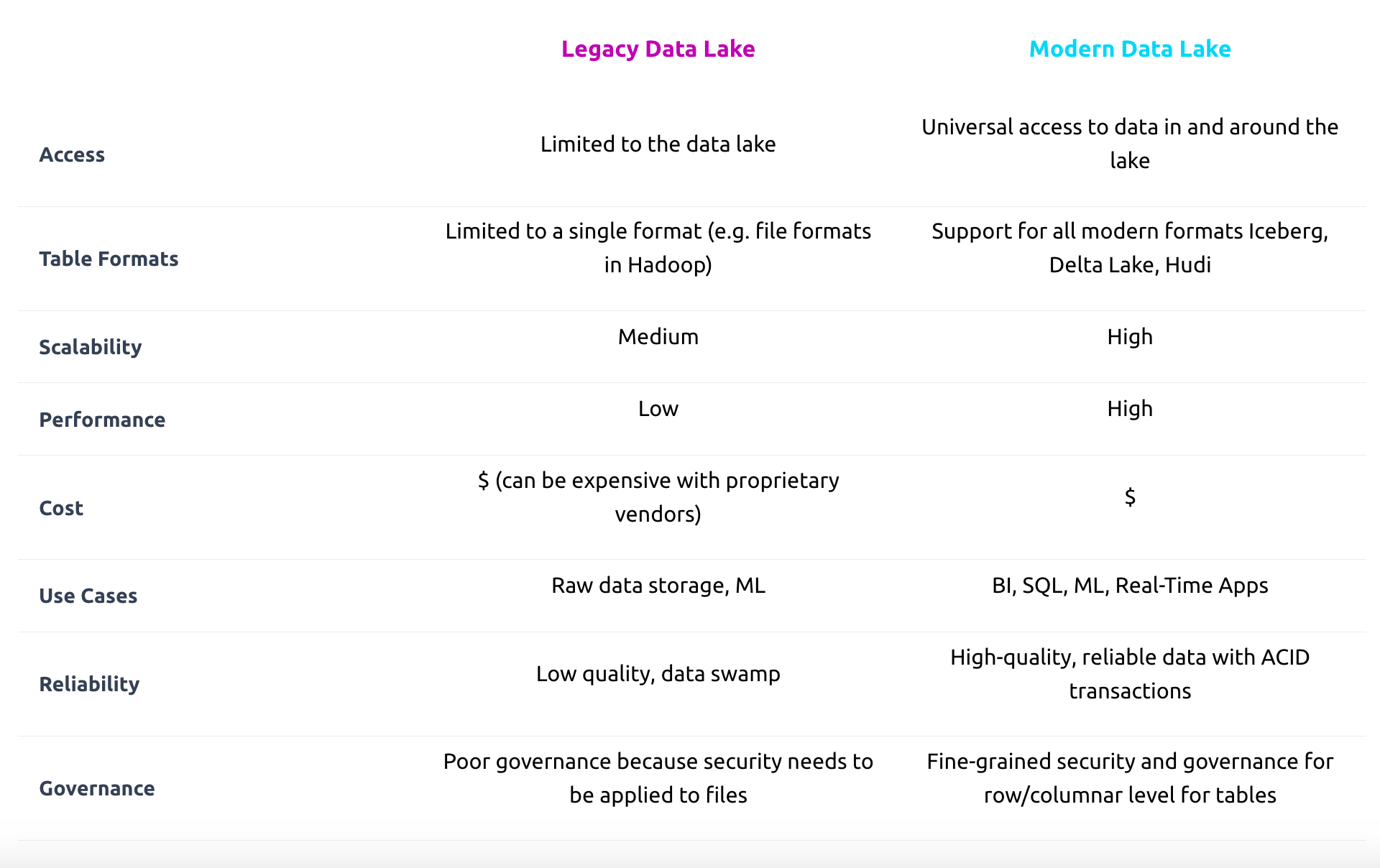The list below outlines some of the things that should be avoided when constructing a data lake. Later, we showcase a table that highlights the difference between a legacy data lake vs a modern data lake. A more modern data lake offers a few promising solutions to common data lake challenges.
1. Data swamp are poorly managed data lakes with little value to the organization
Although data lakes are very versatile, without significant planning they can become difficult to manage and govern effectively. Without the right tools and processes in place, data lakes can devolve into data swamps, making it hard to find and utilize the data inside them. Starburst can help immensely in this regard by ensuring that data is both queryable and navigable regardless of how large the data lake becomes.
2. Self-service access to data in a data lake can expose sensitive data
Most data lakes are designed to give users self-service access without involving a central IT department, but managing access to the data in a data lake is a concern. While self-service access improves efficiency and enables more people to work with data, it can also expose sensitive data to major security risks. For this reason, strict security measures are essential to prevent unauthorized access and ensure that users are trained appropriately in the safest way to use data lakes.
3. Performance and the amount of compute power applied
Data lakes are highly performant under many conditions. Despite this, their efficiency varies considerably depending on a variety of factors. This includes the storage size of the data lake, the amount of compute power applied to it, and the underlying data structures involved. To overcome these issues, advanced query engine technologies, such as Starburst, can be used to improve the performance.
4. Balancing compliance, data governance, and versatility for a data lake
One of the key challenges facing the use of data lakes is the need to ensure that the data inside them adheres to minimum compliance specifications. Data lakes can be subject to regulatory requirements, making it crucial to have a data governance framework in place. In certain circumstances, this increased need for compliance can limit some of the versatility and adaptability benefits that users seek when establishing a data lake. For this reason, a careful balance between compliance and versatility is often required.
5. ACID Compliance has been difficult to enforce
ACID compliance is another potential area of concern for data lakes. ACID stands for Atomicity, Consistency, Isolation, and Durability, and it is a set of design properties that guarantee the reliable processing of transactions. ACID is not usually a critical need in analytical systems. As most data lakes are used for analysis, traditional implementations have not focused on ACID compliance. Nonetheless, it is desirable in some circumstances and remains a drawback of traditional deployments.
In recent years, data lakes have adopted modern open table formats which better support ACID compliance. Storage layer technologies such as Hudi, Delta Lake, and Iceberg have been developed to enhance ACID compliance and provide other enhancements to data lakes, bringing their performance closer to that of a data warehouse.
What are some next steps you can take?
Below are three ways you can continue your journey to accelerate data access at your company
- 1
- 2
Automate the Icehouse: Our fully-managed open lakehouse platform
- 3
Follow us on YouTube, LinkedIn, and X(Twitter).







